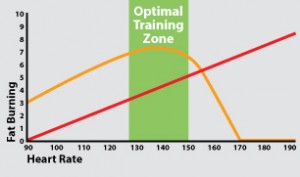Tapering for Marathon Day
 To taper for an event like a marathon means reducing training load in the days or weeks prior to the event.
To taper for an event like a marathon means reducing training load in the days or weeks prior to the event.
“Should I taper?” and “how should I taper?”
These are two questions we are commonly asked. To answer these questions we should first touch on what happens to our body when we train and when we taper.
As we train for an event we repeatedly load our musculoskeletal and cardiovascular systems thus providing a stimulus for these systems to adapt to cope with the extra load. The ability of our muscles to use fuel and deal with the waste products of energy production improves, as does the ability of our cardiovascular system to support the increased demand from muscles.
The result is improved performance by improving the load that our musculoskeletal and cardiovascular systems sustain. Meaning we can perform at a higher intensity for longer.
Tapering then gives our bodies a period to adapt fully to the load of our training. For example:
Glycogen stores are maximised within a few days
Factors such as blood volume, red cell volume and enzyme activity are maximised over a period of about a week.
Healing of minor tissue trauma also commences helping to settle those niggles
How long should I taper for?
Studies have shown that the length of a taper may be anywhere from 4 to 28 days and this is probably very much an individual and circumstantial thing. Yes, you are going to have to use some trial and error here to find out what works best for you. It also depends on your training load and any of those niggles that may be bothering you.
maintain a high intensity in your training sessions while greatly reducing volume
How should I taper? How long and intense should my sessions be?
One thing is for sure, after all your hard training you definitely don’t want your taper to cause you to become de-trained. There have been quite a few studies done on what is the most effective ways to taper and they basically all come to the same conclusions. That is that you should maintain a high intensity in your training sessions while greatly reducing volume.
By maintaining a high intensity you continue to give your system a stimulus to maintain the adaptations that have occurred and perhaps continue to improve more.
By reducing volume you provide time for recovery and tissue healing as well as prevent fatigue. Your taper should give you the opportunity to really freshen up before the big day.
Your training should be very specific to what you want to achieve on competition day. For example if tapering for the marathon:
Run at or above your planned race pace but progressively reduce run time/distance
Shorten your interval sessions and shorten the intervals within them
Give yourself plenty of recovery time and adequate nutrition
Very best wishes for your upcoming endurance events. Happy tapering!
For availability and bookings, Call us now on
For information about testing process and pricing click here


